The TESLONG TTS260 is a long range thermal monocular developed with a very clear aim in mind: to be able to produce clear thermal images from as far as possible (the advertised recognition distance is 266 yards). And the 256x192p infrared sensor paired with the 4x digital zoom should be able to accomplish this seemingly difficult task. I have actually tested a smartphone that had equipped a monocular thermal camera (AGM G2 Guardian) and it got difficult to see farther than 200 yards (the recognition range).
| TESLONG TTS260 | |
|---|---|
| TESLONG.com | Check Product |
| Amazon.com | Check Offer |
Seeing that the TESLONG TTS260 sports the same resolution, I am fairly certain that it can go past 200yd, especially since we’re dealing with a dedicated professional device. And it’s also fairly compact when compared to other thermal monoculars that target the same audience. I couldn’t help wondering how was Teslong able to keep the price tag lower than most of its main competitors and the answer is that it’s a very no-frills device which left out some features.
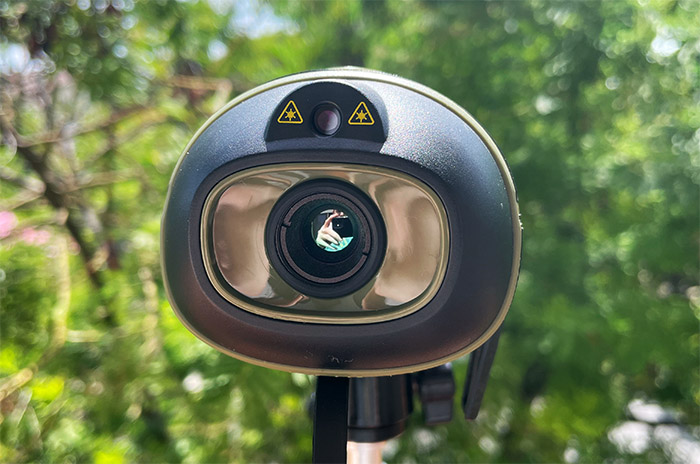
I am mainly talking about the missing option to record a video, but it won’t really be a deal breaker for the people that will use the TESLONG TTS260 to detect and track wild animals. I also saw that the actual temperature is not displayed when checking the viewfinder and again, the TESLONG TTS260 is not really aimed at the construction or industrial field, it’s clearly built for outdoor exploration. That being said, let’s put the TESLONG TTS260 monocular camera to the test and see how well it performs.
Design and Build Quality
The TESLONG TTS260 is a stand-alone monocular, so it’s not just a module that requires the connection to a smartphone, it has its own built-in display. Kind of, but you’ll see in a minute what I mean by that. The device is fairly compact and it does seem built to withstand outdoor conditions. Indeed, the TESLONG TTS260 measures 6.9 x 2.7 x 2.4 inches (17.6 x 6.9 x 6.0cm) and the case is made of plastic with a soft leather-like pattern at the bottom, while at the top, surrounding the buttons, the manufacturer decided to use a rubbery texture.
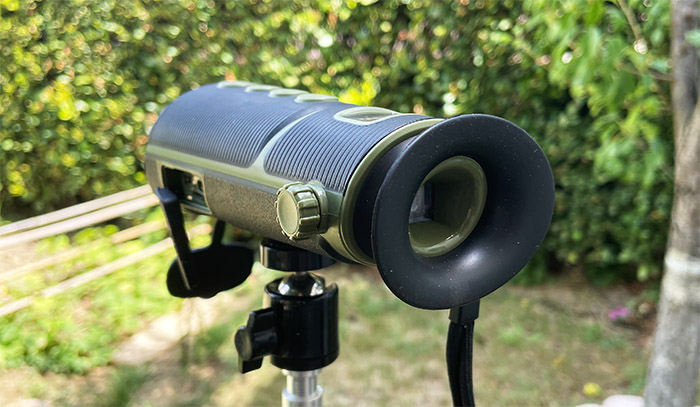
The color palette is black and green, so it’s pretty much close to the camouflage style which I guess fits the thermal monocular really well considering that it was built for outdoor use. But how well does it handle rain and dust? The TESLONG TTS260 is IP67-rated which means that it is completely dust-proof and it should also handle rain and sweat. Even if you drop it in a puddle of water, it shouldn’t damage the device if it’s removed quickly. I have looked around the case and I noticed that there are a couple of protective covers made of silicone.
The one on the left side has the role of sealing the ports area from the elements and, after being removed, it will expose the USB-C charging port, an LED, the microSD slot (with a 16GB card already installed) and a mini HDMI port. Bear in mind that the USB-C port supports 5V and this is important because it refused to charge when I connected it using a higher-rated cable (attached to a 100W charging brick). The LED will light up red when the device is charging and will become green as soon as the battery reaches 100%.
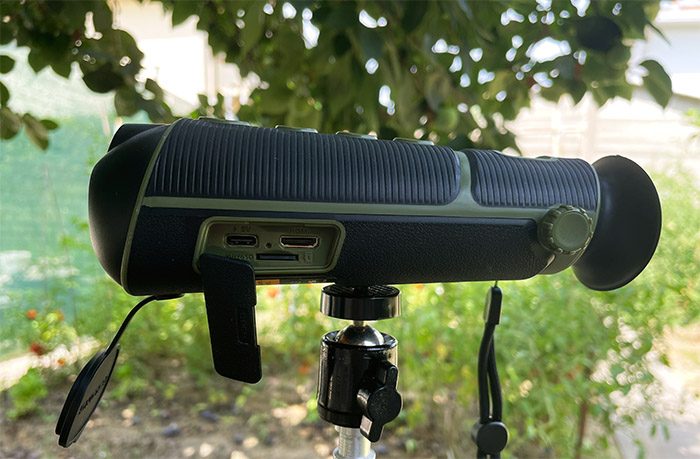
The mini HDMI port is a curious addition but I suppose it makes sense considering that the built-in display can only be seen through the viewfinder and an alternative means of checking the footage is always welcomed. The other silicone cover is on the front to protect the lens and next to it, there’s a laser. I guess I should also mention that the surface that gets in contact with your face to see the viewfinder is made of soft silicone.
At the top, there are four large buttons and the only one that has an actual tactile feedback is the larger Power button that you need to press and hold to turn on or off the device. To see if the device is powered on, check the TESLONG logo – the LED underneath it should shine through. The other three buttons can be used to capture a photo, for zooming in and for changing the color palette. And, as I mentioned before, the travel distance for these buttons is pretty much non-existent.
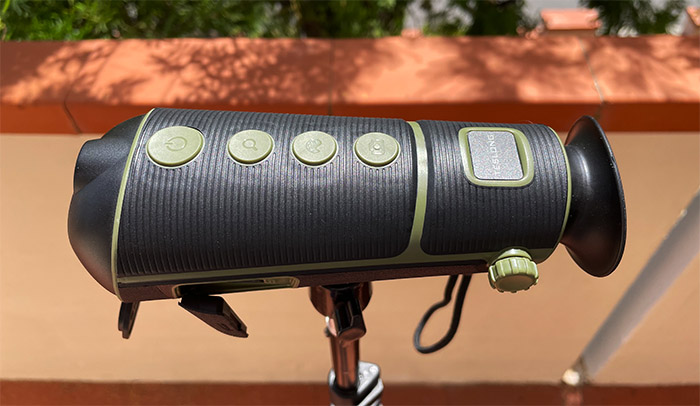
Since there is no automatic focus (the laser could have been used for this purpose), you need to use the knob to manually adjust it. The last two areas of interest are the mounting hole at the bottom to attach the TESLONG TTS260 to a tripod and the lanyard which allows you to carry the thermal monocular with ease.
The TESLONG TTS260 in action: Quality, clarity and accuracy
The TESLONG TTS260 relies on an infrared detector with the resolution of 256×192 pixels and which has a refresh rate of 50Hz, well above what some entry-level thermal cameras in the US are limited to (7-8Hz). And, in order to check the footage that the monocular can produce, you need to check the built-in LCOS display which has a resolution of 720×540 pixels. I did have a mini HDMI cable around, so I connected the TESLONG TTS260 to a Dell U2515H (1440p resolution) and you can see for yourself a short video of how the thermal monocular ‘sees’ its surroundings.
This is a very short-range video, but it’s enough to see at least a couple of important things. First, I did notice a very slight stutter when the camera had to recalibrate itself and it’s very normal behavior that I have seen on all other thermal cameras that I tested so far. The good news is that it happened only once in the five minutes I moved the TESLONG TTS260 around in the office – way better than the aforementioned cameras. The second important aspect is the lack of degree values. I did mention it in the intro as a shortcoming, although people that track animals won’t really mind it.
But, I do need to mention that in case there are two or more objects that are hotter than their environment, you wouldn’t know which one has a higher temperature. This could be fixed by simply adding the exact temperature – just like other thermal cameras, a simple highest, target and lowest temperature should do the trick. Since the whole point behind the TESLONG TTS260 is its long-range abilities, I decided to capture a few photos to see just how far the thermal monocular can show a person.

The first spot was at about 110 yards (100 meters) and I could see cars very clearly at that point, but it was a very sunny day and I could not tell apart people from the rest of the environment, even if I changed the color palette.
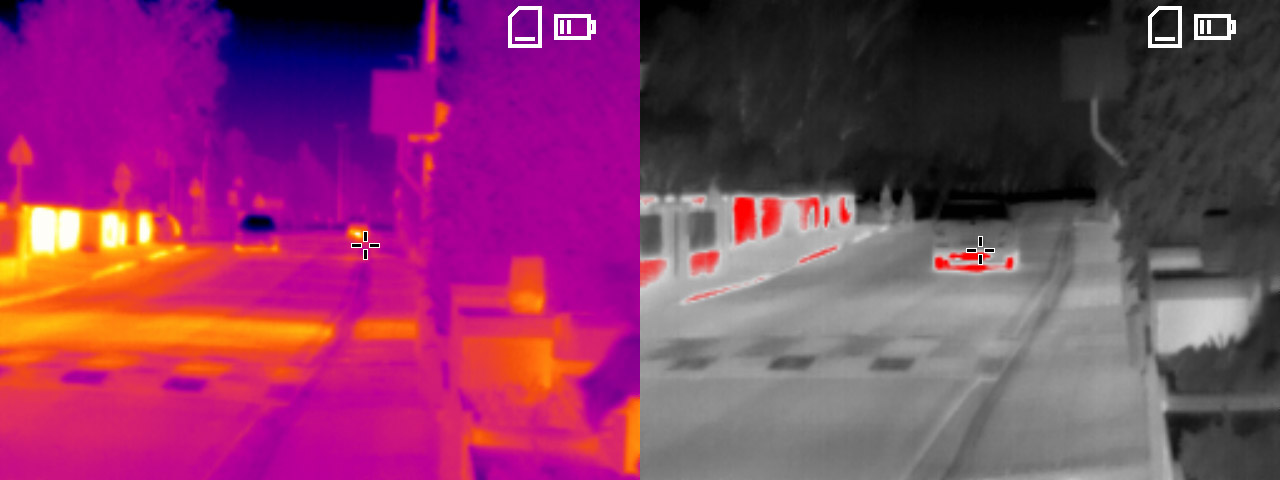
So, I decided to wait it out until it was dark and the effects of the insane heatwave would wear off a bit – this does show that the TESLONG TTS260 will work great in forests, but it may struggle in urban areas during the summer. At about 9 PM, I could clearly see people moving as far as 110 yards using the default color palette and then I moved to the 220 yards point (or approximately 200 meters).
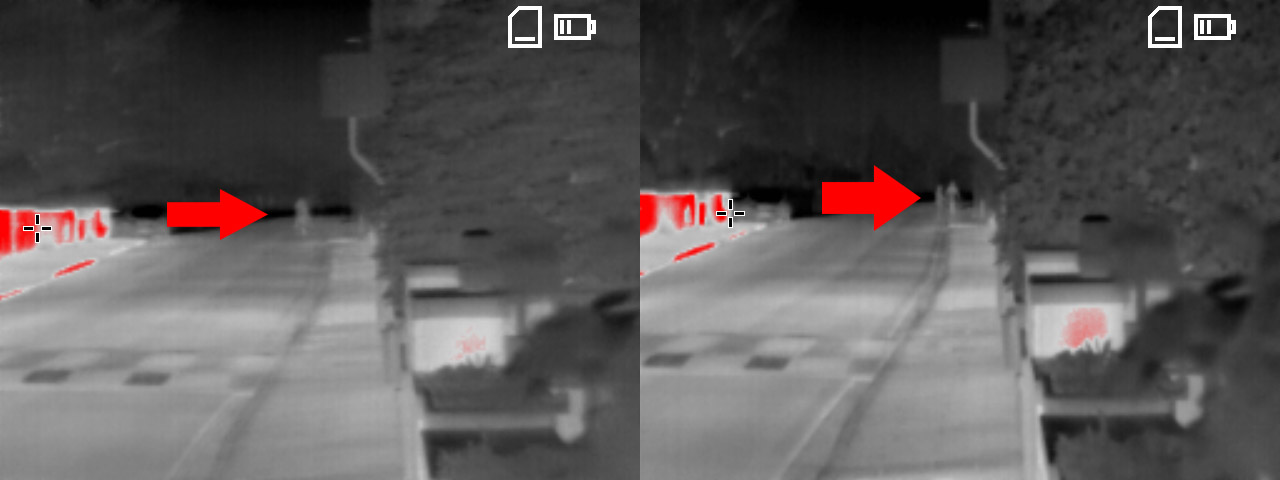
Even the orange/red color palette allowed me to see that people were moving in the distance, but I found the other colors to be better at allowing me to distinguish between the environment and the moving people. The good news is that they weren’t just spots and I could tell a faint shape, so it is very much possible to see even farther, although it will become less clear. That being said, overall, the TESLONG TTS260 can ‘see’ very far and it will work really well in the wilderness and in low-light conditions.
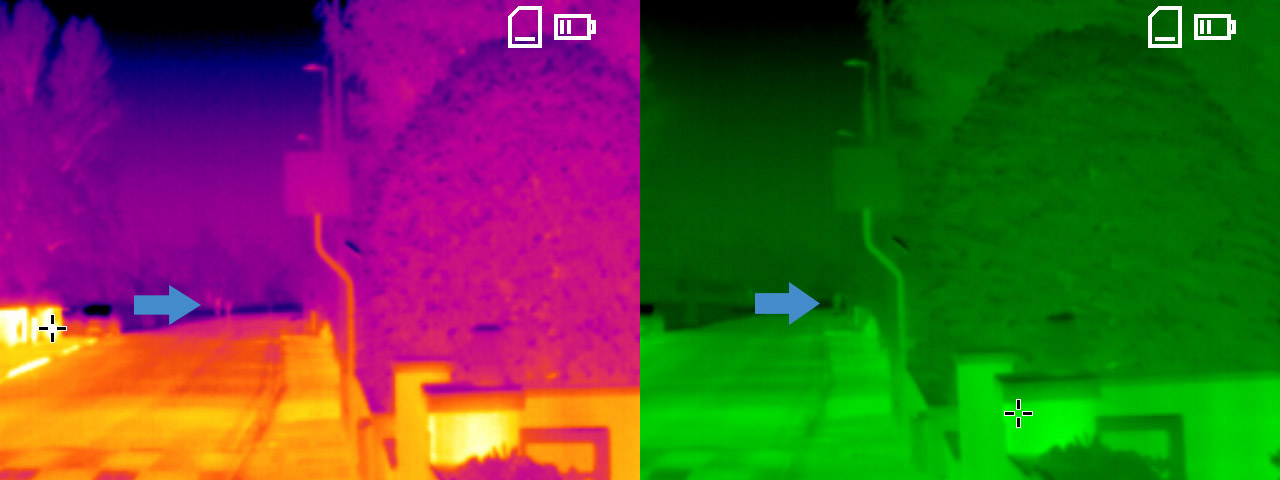
Note: It is advisable to not point the thermal monocular at the sun nor should you point a laser at the lens since it can cause irremediable damage to it.
What about the laser?
There is a front-facing laser and to enable it you need to press the Power button while the TESLONG TTS260 is turned on. It seems to be fairly potent and it does reach farther than expected since it was visible at the 220 yards point where I previously tested the performance of the monocular camera. I am not entirely sure about its applications since you can’t see the laser from the viewfinder, but I suppose it’s an extra feature to have at hand in case you need it.
The Battery Life
From what I could gather using the available info online, it seems that the TESLONG TTS260 is equipped with a 4,800mAh battery and, considering that there is no support for quick charging technologies, it’s going to take a while until it goes from 0 to 100%.
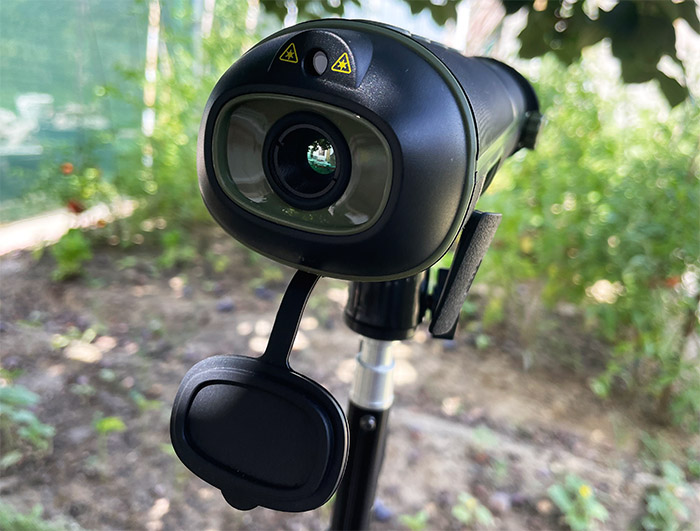
I started charging the thermal monocular when the battery was 5% and it took about 4 hours for it to reach 100%. The manufacturer says that the battery should last for about 10 hours on a single charge and during my tests, it was way longer than that. I got very close to 20 hours, so it’s pretty much double the advertised amount.
The Conclusion
The idea behind the TESLONG TTS260 is to have a compact thermal monocular that will allow the user to accurately detect animals and people from very far. And I think it managed to achieve this goal easily. My tests has shown that it’s possible to see people from at least 220 yards away and the rugged build of the device ensures that it will survive pretty much any type of outdoor conditions. Sure, there are some shortcomings, such as the missing option to record videos or the lack of temperature values, but as I mentioned several times in this article, if it’s used for tracking and detection, then the TESLONG TTS260 is pretty much the best option in its price bracket.
TESLONG TTS260
-Pros
- Can detect people and objects farther than 220 yards.
- Compact and portable
- Long-lasting battery life.
- The mini HDMI port can come in handy if you're wearing prescription eyeglasses.
- There is a 16GB microSD card already installed.
Cons
- You can't record videos.
- The buttons don't offer a proper feedback when pressed.
- There are no exact temperature readings.

Mark is a graduate in Computer Science, having gathered valuable experience over the years working in IT as a programmer. Mark is also the main tech writer for MBReviews.com, covering not only his passion, the networking devices, but also other cool electronic gadgets that you may find useful for your every day life.

